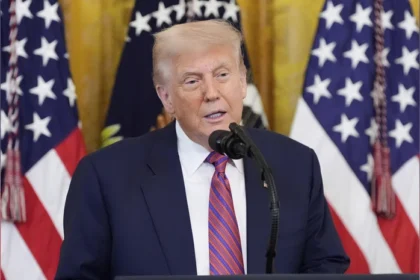Top 5 Game-Changing Economic Impacts of the $100 Billion India-US Mega Trade Deal”
India-US Mega Trade Pact Nears Finalization: Mission 500 Aims to Boost Bilateral Trade to $500 Billion by 2030
In a major development signaling deepening strategic and economic cooperation, India and the United States are on the verge of concluding a landmark trade agreement aimed at drastically enhancing bilateral commerce. Dubbed “Mission 500”, the proposed deal targets an ambitious expansion of annual trade from the current $190 billion to a staggering $500 billion by the year 2030. As negotiations reach their final phase, stakeholders and analysts alike view the pact as a transformative leap for both economies.
Background: A Long Road Toward Economic Convergence
The economic ties between India and the United States have evolved significantly over the past two decades. While trade and investment flows have grown steadily, they have also faced intermittent roadblocks — ranging from tariff impositions during the Trump administration to differences over agricultural subsidies, data governance, and intellectual property rights.
However, recent years have witnessed a re-energized push for economic integration. Prime Minister Narendra Modi’s government has prioritized forging new trade alignments with key global powers. Having recently concluded a Free Trade Agreement (FTA) with the United Kingdom, India is actively pursuing parallel talks with both the United States and the European Union.
This renewed focus is set against the backdrop of changing geopolitical and supply chain dynamics. The decoupling of global economies from China due to rising tariffs, political uncertainties, and pandemic-induced disruptions has driven nations to seek more reliable partnerships. India and the United States, the world’s largest democracies, find themselves aligned in their vision for a resilient and diversified global trade order.
‘Mission 500’: More Than Just a Trade Deal
The ongoing trade negotiations are not just transactional; they represent a long-term economic vision. The objective of ‘Mission 500’ is to triple the current trade volume within a five-year horizon. This goal requires not just tariff reductions but systemic policy reforms, improved market access, and smoother cross-border investments.
US Commerce Secretary Howard Lutnick, who recently met India’s Commerce and Industry Minister Piyush Goyal, described India as “one of the most extraordinary economies” in the world. He lauded the entrepreneurial spirit of the Indian population and expressed optimism that the final deal would be achieved soon. “I think we found a place that really works for both countries,” he stated, hinting at imminent agreement.
Key Sectors to Watch: Immediate and Long-Term Impact
The trade deal is expected to benefit multiple sectors in both countries, with implications for exporters, consumers, and investors. Here’s a breakdown of the key areas expected to see significant gains:
1. Agriculture and Processed Food
India’s agricultural exports to the United States currently stand at around $4 billion. The deal is expected to enhance market access, especially for high-quality Indian commodities such as spices, basmati rice, and marine products. In return, India may ease import duties on American dairy products and processed food brands like Danone and Land O’Lakes.
2. Pharmaceuticals and Healthcare
The Indian pharmaceutical industry, which already plays a crucial role in supplying affordable generics to the US, could see streamlined regulatory approvals and reduced trade barriers. This would allow for more efficient entry of Indian drugs into the American market, particularly in the post-pandemic environment where healthcare resilience is a global priority.
3. Textiles and Footwear
One of the most labour-intensive sectors in India, textiles and footwear manufacturing could be among the biggest winners of the trade agreement. These sectors, which have been losing ground to cheaper producers like Vietnam and Bangladesh, stand to benefit from reduced tariffs and larger procurement contracts from American retailers.
4. Electronics and Engineering Goods
Engineering goods are India’s largest category of exports to the US. Enhanced duty concessions and simplified logistics are likely to further boost these exports. The agreement may also facilitate smoother technology transfers and joint ventures in electronics manufacturing, aligning with India’s “Make in India” vision.
5. Consumer Goods and FMCG
From fashion brands to personal care items, American goods could become more affordable in the Indian market post-deal. Consumers can expect duty reductions on high-end imports, making brands like Ralph Lauren, Nike, and Estée Lauder more competitively priced. Bourbon whiskey brands like Jack Daniels and Jim Beam, currently subject to high tariffs, are likely to see price drops as well.

Enhancing Capital and Investment Flows
One of the less-discussed but equally significant aspects of the India-US trade agreement is the expected increase in two-way investment. Experts believe the agreement will streamline regulatory frameworks, reduce bureaucratic hurdles, and encourage American capital to flow more freely into Indian infrastructure, digital technology, and green energy projects.
Sectors like data centers, electric vehicles, and defense manufacturing — where India is seeking foreign partnerships — are expected to benefit from the removal of investment bottlenecks.
Geopolitical Implications: Aligning Supply Chains
Strategically, the trade agreement represents a move toward realigning global supply chains that are currently dominated by China. As the United States continues to impose tariffs on Chinese imports and seeks alternatives in Asia, India presents a natural partner due to its scale, political stability, and skilled labor force.
A robust trade agreement with the US would make it easier for India to integrate into Western-led supply chains in sectors like semiconductors, electronics assembly, and critical minerals. This complements broader Quad initiatives (involving the US, India, Japan, and Australia) to ensure economic security in the Indo-Pacific region.
Points of Contention: Labour and Data Sovereignty
Despite the optimistic tone, the finalization of the trade deal is contingent on resolving certain contentious issues:
- Labour Mobility: India has long advocated for easier movement of skilled professionals to the US, particularly under H-1B visa programs. However, US domestic politics have made it difficult to commit to immigration flexibility, especially in an election year.
- Data Localization: India’s data sovereignty rules, which require critical data to be stored within the country, have been a sticking point with US tech companies. Washington wants greater freedom for cross-border data flows, while India argues this is essential for national security and user privacy.
Trade analysts say that while both sides are working toward “creative compromises,” these concerns might either delay the deal or require phased implementation.
Policy Coordination With Europe
India’s approach to global trade is not US-centric. Trade Minister Piyush Goyal has reiterated that India is simultaneously making “fast progress” on its bilateral agreement with the European Union, another major trading partner. These parallel negotiations are part of a broader strategy to diversify India’s trade dependencies and enhance resilience against external shocks.
A Potential Game-Changer
Experts believe that once the India-US trade pact is signed and implemented, it will act as a catalyst for transforming India’s export ecosystem. With better access to high-value markets and more predictable trade conditions, Indian firms could be better positioned to scale globally.
Moreover, as India inches closer to becoming the world’s third-largest economy, such deals will be crucial in shaping its global economic identity.
Conclusion: From Vision to Reality
The India-US trade pact under “Mission 500” is more than an economic agreement; it is a strategic roadmap for the next decade of bilateral relations. It promises to create jobs, increase consumer choices, enhance investment flows, and strengthen the geopolitical partnership between two like-minded democracies.
While the final hurdles are yet to be cleared, the momentum is clearly in favor of convergence. If realized in the near term, the agreement could redefine India-US relations for the 21st century — not only as security partners but also as true economic allies driving global growth.
Also Read : Crackdown in Kashmir: 3 J&K Govt Employees Terminated, Jailed Over Alleged Terror Links








